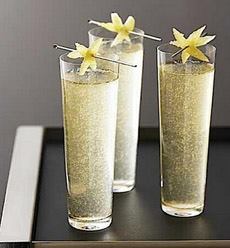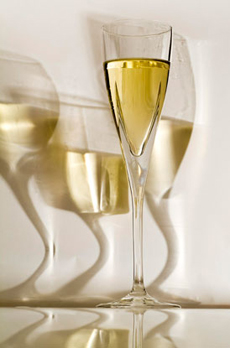TIP OF THE DAY: Holiday Champagne Alternatives
|
Whether for Thanksgiving, Christmas or New Year’s Eve, Champagne is a tradition in holiday homes; that is, holiday homes with means. Champagne, by far the most famous sparkling wine in the world, is in the highest demand. But can only be produced on limited acreage, the region of Champagne, in northeast France. The worldwide demand for Champagne has been increasing since the 1990s, as affluent consumers in Asia, Russia and elsewhere joined the demands in Europe and North America. Last year, about 312 million bottles were sold. While that may seem a lot, worldwide, 3.2 billion cases of wine were produced (2013 figures). That’s 38.4 billion bottles (54%, red wine, 37% white, 9% rosé). The number one country for volume of wine purchased is the U.S. See more wine statistics below. The demand for Champagne and the limited ability to produce more of it has upped the prices. The most affordable bottles are non-vintage Champagnes (blends of juice from multiple grape harvests), which make up the bulk of the market. It isn’t less good than a vintage Champagne; in fact, it best shows off the house style, since vintage Champagne by law can only include grapes from that vintage. Not all years produce great grapes (not sweet enough, too sweet, etc.), so instead of creating a vintage Champagne, vintners reserve those wines and blend them them to create the precise flavor they seek. You can buy good nonvintage Champagnes for $35 to $45.00. Our favorites are Louis Roederer’s NV Brut Premier and Champagne Pol Roger Brut Reserve. Only Champagne connoisseurs—those who drink a lot of it and have the expertise to analyze what they’re drinking—can tell you if a glass of Champagne served blind holds a vintage or a nonvintage. By law, only sparkling wines made in the Champagne region can be called Champagne. This AOC designation ensures consumers that the food has been made in its original region, with specified ingredients and traditional techniques. It delivers a taste consistently and true to its nature. Every other wine that bubbles is called “sparkling wine.” These other wines offer bubbles at lower prices; and every non-expert wine drinker will be thrilled that its bubbly, from wherever. (Experts also enjoy these other sparklers.) Head to your nearest wine store and check the prices. Don’t hesitate to ask the clerks for their favorites. Consider: For dessert, go for a sweeter sparkling wine, such as: |

[1] Sparkling wines are made all over the world (photo courtesy Grey Goose). [2] Check out the rosé and red wine bubblies (photo courtesy Ocean Spray). [3] freixenet-cordon-negro (photo courtesy Freixenet). [4] Cava, from Spain, is a popular, affordable sparkler (photo courtesy Food & Wines From Spain). |
|
|
According to International Wine & Spirit Research, Europe and the U.S. consume the most volume, with 2013 statistics showing the big drinkers by volume to be: The biggest sparkling wine drinkers are the Germans, who drank 46 million cases of fizz in 2014. France came in second, at 30 million cases; and Russia, traditionally a large market for Champagne since the wine was created†, consumed 26 million cases. The U.S. was fourth, with 18 million cases, and the U.K. fifth, consuming 11 million cases—incredible given the difference in population of the two countries. The region now called Champagne was settled by the Gauls around 500 B.C.E. When the Roman legions conquered the area in 56 B.C.E., they bestowed upon the land the name Campania (Champagne) because of the similarity between the rolling hills of that area with the Roman (now Italian) province of Campania (the word campania itself means “open country”). In the Middle Ages Champagne was a duchy, then a country. In 1284, Champagne was brought under French rule when Jeanne, Queen of Navarre and Countess of Champagne, Brie and Bigorre married the future King Philippe IV (she was 11 years old). When Philippe’s father died the following year, Jeanne became Queen of France at age 12. The wine grapes grown since Roman times were made into still wine†. In the 17th century, the process for making champagne was discovered and the vintners have been making bubbly since then. The best grapes are grown where a Tertiary period chalk plain overlaps a vast Cretaceous chalk plain that lies underneath the soil layer (it’s the same huge basin that creates the White Cliffs of Dover in England). The chalk provides good drainage and reflects the heat from the sun. The unique terroir creates the unique creamy, toasty flavor of Champagne wines.
|
||


